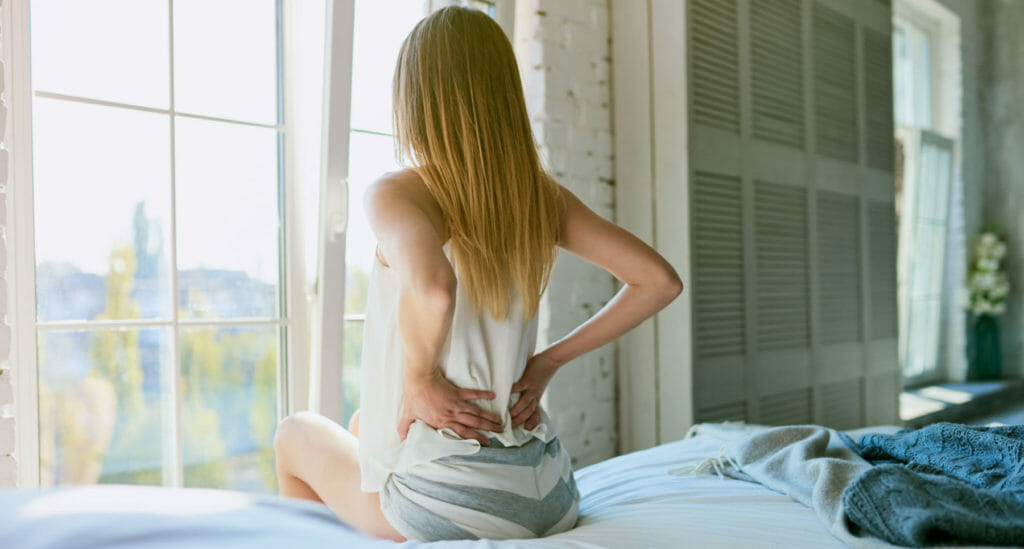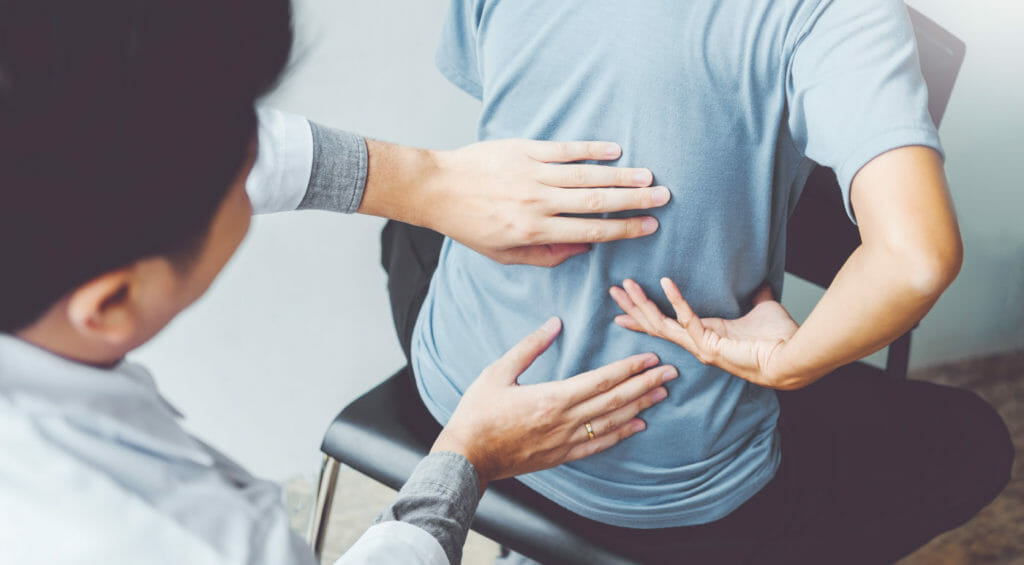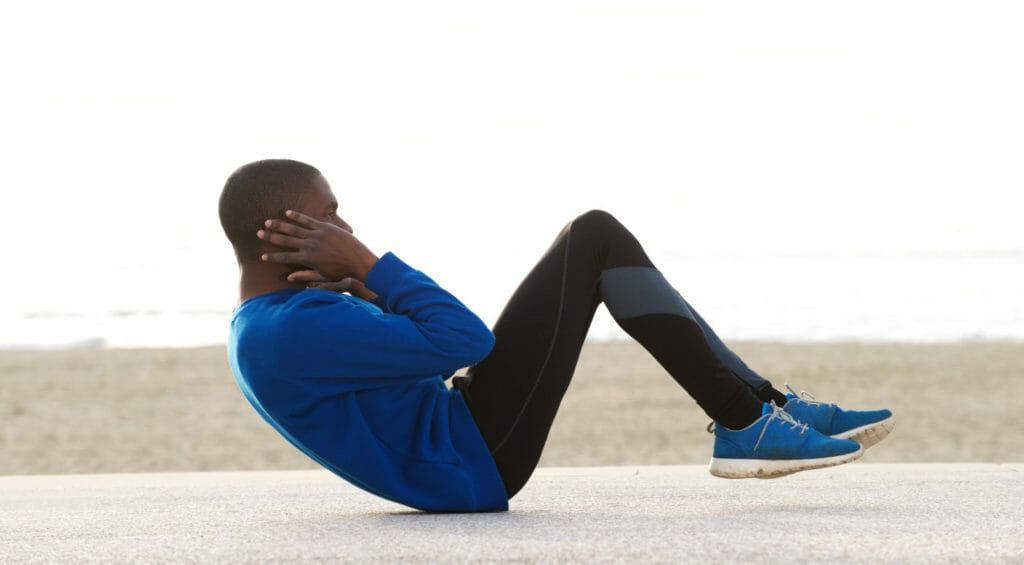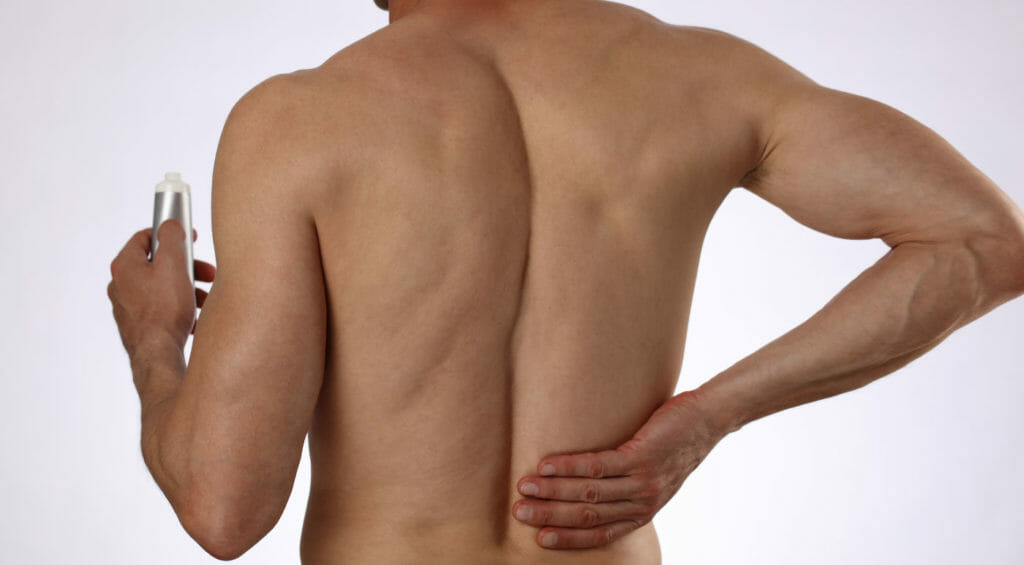
If you experience back pain on a regular basis, you are certainly not alone. A study of 1,355 people helped researchers determine that up to 80% of adults may suffer from back pain at some point in their lives. At any given point, a minimum of 15% of adults may be affected by this common symptom.
People suffer from back pain for many reasons, including obesity, inappropriate posture, sleeping on the wrong mattress, and medical conditions like osteoarthritis. Regardless of why you suffer from it, you probably want to find out how to relieve lower back pain. From pharmaceutical and conventional treatment options to simple strategies that you can incorporate into your daily routine, let’s look at some of the most effective strategies for relieving lower back pain.
See also: 10 Best Mattresses for Back Pain
Start by Seeing a Doctor
Before you consider how to relieve lower back pain using self-medication, prescription drugs, and at-home strategies, you should pay a visit to your doctor. Many conditions are known to contribute to lower back pain, and some of them can be dangerous. Hitting the gym or trying out a new exercise routine could actually make them worse if you don’t know the cause of your symptoms.
Depending on your symptoms, a doctor will be able to conduct tests to explore the suspected underlying conditions. Some of these tests may include:
- X-rays
- MRI scans
- CT scans
- Bone scans
- Nerve studies
- Blood tests
When there is a serious underlying condition, the physician will advise you to undergo physical therapy or other treatments to help address the health problem. This may help to relieve your symptoms.

But if there’s no obvious problem that can be addressed through conventional methods, try some of these ways to reduce lower back pain.
How to Relieve Lower Back Pain with Medication
The most common method that people opt for when trying to relieve lower back pain is medication. Various pharmaceutical drugs can assist in reducing your pain. But it’s important to understand how each of these drugs works and how they may interact with other medications, as well as be aware of any potential side effects you may experience.
Some common medications that may help reduce your pain include:
- Anti-Inflammatories: These drugs primarily help to reduce inflammation, which is known to contribute to the development of pain. Non-steroidal anti-inflammatories like ibuprofen and naproxen are the most common options in this category. Since these drugs yield a milder effect than some of the other options, a physician will often recommend them first before considering other types of medications.
- Prescription NSAIDs: While these medications are also classified as anti-inflammatory drugs, they can only be obtained through a prescription. Common options include Nabumetone and Celecoxib. They’re stronger than the over-the-counter options, but also come with more serious side effects that you should take into account.
- Muscle Relaxants: When stiff and tense muscles are to blame for your lower back pain, using muscle relaxants could be a good strategy. Common muscle relaxants include Carisoprodol, Baclofen, Tizanidine, and Cyclobenzaprine. These drugs help to relax your muscles and may also be able to reduce your pain in the process. Muscle relaxants are also effective for treating muscle spasms in the lower back.
- Opioids: If none of the above options work for you, your doctor may suggest considering opioids. This category includes options like Tramadol, Vicodin, and, of course, drugs that contain codeine. Opioids affect the pain receptors in your brain to block your perception of pain. While effective, opioids have many side effects, and it is possible to develop a dependency if you use them for too long.
Natural Ways to Relieve Lower Back Pain

Even though medications are convenient for relieving lower back pain, their side effects can be unpleasant, and many people try to avoid them. If this sounds like you, then consider these natural or alternative strategies to reduce or even alleviate your back pain without having to undergo surgical procedures or use pharmaceutical drugs.
Cold or Hot Therapy
Cold and hot therapy is often the recommended treatment for acute injuries, but it may also benefit those who are suffering from chronic pain. Scientists at the Shahrekord University of Medical Sciences in Iran conducted a study to test the effectiveness of these strategies in a group of people with lower back pain. They found that both hot therapy and cold therapy were effective in alleviating the pain. You can also combine these therapies with other methods to increase the efficiency of your treatment plan.
Strengthen Your Core
Another great way to reduce lower back pain when these symptoms become chronic is to strengthen your core using exercise. However, it’s important not to overdo it, since this may make aggravate your symptoms and make the pain worse.

Some of the different types of exercises that will help strengthen your core include:
- Pelvic tilt
- Trunk curl
- Leg Lifts
- Prone arm raises
- Prone leg raises
- Cat curls
This list will help you get started, and as you build up some strength in your core, you can explore additional exercises.
Natural Pain Relief Creams
While there are also pharmaceutical creams on the market, if you are hoping to relieve lower back pain naturally, you should consider a topical solution that contains specific natural ingredients. Three particular ingredients have been proven through scientific research to relieve pain effectively:
- Capsaicin: This is a chemical that is extracted from hot chili peppers. Applying a topical solution that contains capsaicin may help you experience relief from pain. In one study, researchers found that capsaicin may even be useful in relieving pain among people with osteoarthritis.
- Menthol: Many topical solutions contain menthol as an active ingredient. According to one particular scientific study, this ingredient may help to reduce the sensitivity of pain receptors in the area where the solution is applied.
- Arnica: A popular homeopathic remedy, arnica oil has been shown to be highly effective in treating chronic pain, including in cases where a person has osteoarthritis. The effects are improved when combined with massage therapy or acupuncture.

Focus on Your Sleep
We all need to sleep every night, and poor sleep has been linked to a number of adverse effects on your body. A research paper by the Otto-Friedrich University Bamberg in Germany explains that there is also a strong connection between sleep deficiency and pain perception. You may experience a higher level of pain when you do not sleep enough.
On that note, it’s also important to make sure your mattress isn’t making things worse. A bad mattress can actually aggravate lower back pain, so it’s essential to make sure the one you use is helping rather than hurting you.
Conclusion
Millions of people experience lower back pain. In some cases, the pain may be acute and will go away after a few days to weeks. In other cases, chronic lower back pain can develop. Learning how to relieve lower back pain can help you sleep better at night and be more functional during the day, avoiding the disability that is often caused by this type of pain.
Additional Back Pain Resources:
The Best Mattresses for Back Pain
How to Sleep With Lower Back Pain
Can a Good Mattress Help with Back Pain?
Top 10 Best Mattresses for Seniors with Back Pain
Sources:
- https://www.ncbi.nlm.nih.gov/pmc/articles/PMC5573856/
- https://www.livestrong.com/article/417177-why-does-my-lower-back-hurt-when-im-exercising/
- https://www.mayoclinic.org/diseases-conditions/back-pain/diagnosis-treatment/drc-20369911
- https://www.ncbi.nlm.nih.gov/pmc/articles/PMC4225921/
- https://www.ncbi.nlm.nih.gov/pubmed/24941673
- https://www.onlinelibrary.wiley.com/doi/full/10.1111/jcpt.12679
- https://www.liebertpub.com/doi/abs/10.1089/act.2018.29152.mja?journalCode=act&
- https://www.ncbi.nlm.nih.gov/pubmed/16386930